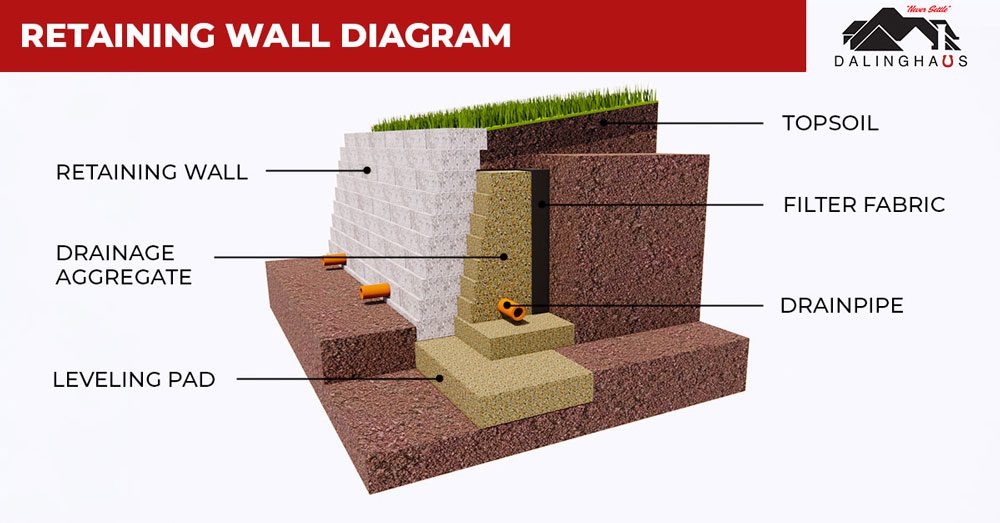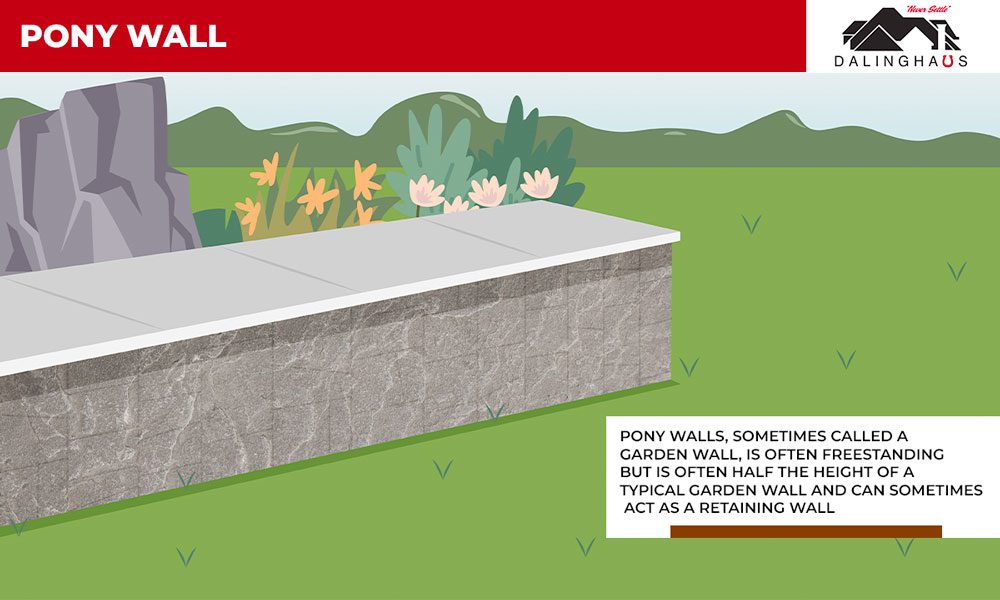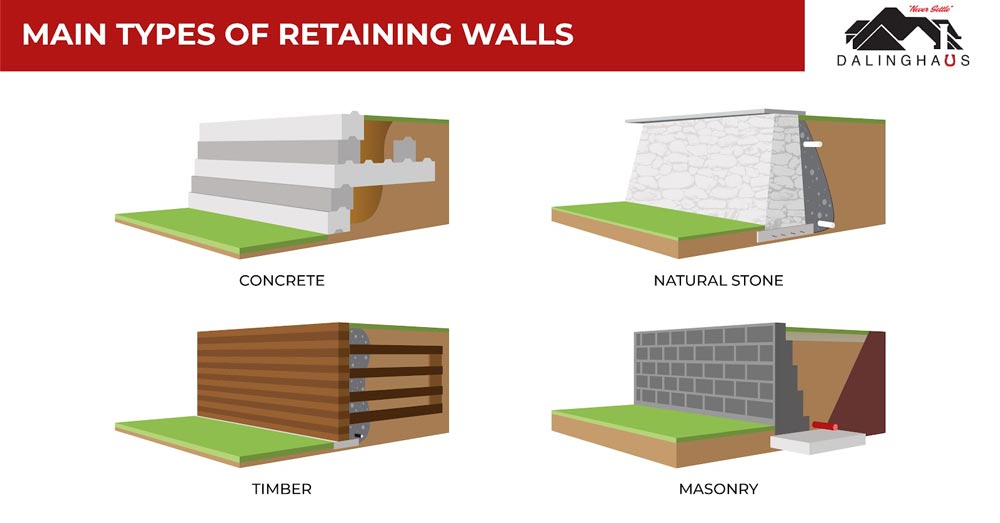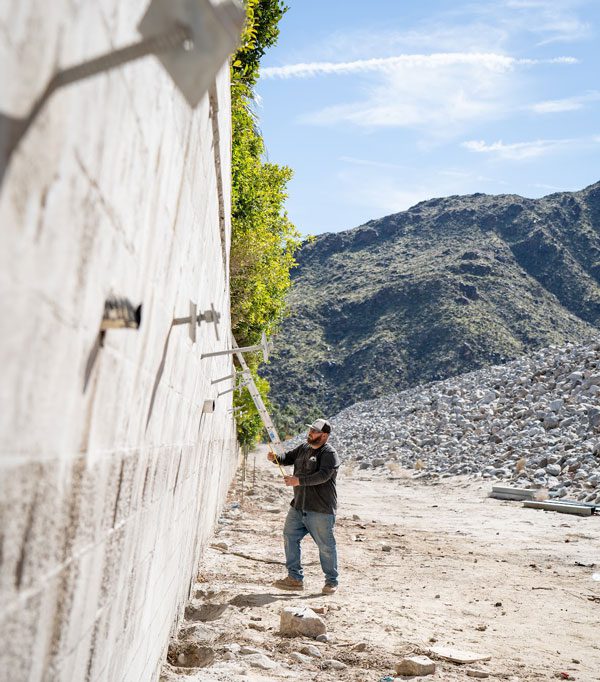If you have considered adding walls to your landscape, there is an excellent chance that you have heard of retaining and pony walls. However, you may not clearly understand the similarities and differences between a retaining wall vs. a pony wall.
The purpose of this article is to explain what these two wall types are, how they are the same, and the critical ways in which they differ from one another. By the time you finish reading, you’ll have a better idea of which type of wall is best for you.
What is a Retaining Wall?
A retaining wall is a vertical structure allowing only one face to remain visible. While you can see the front of a retaining wall, the back side will be embedded into the earth or a hillside. This distinction in the visual characteristics of a retaining wall implies its primary purpose. The purpose of a retaining wall is to hold back the earth and allow the slopes below and above it to become less steep.

A retaining wall is an efficient way of dealing with grade changes that appear on your property. By installing a retaining wall, you can reduce the steepness of your landscape and create usable outdoor areas either below the wall, above it, or both.
What is a Pony Wall?
A pony wall, sometimes called a garden wall, is much different in its purpose than a retaining wall. Pony walls are often freestanding and come to about half the height of a full garden wall. As such, they provide some much-needed definition of a garden space without enclosing it entirely.
Pony walls came into being when gardeners aimed to keep livestock and other animals out of a formal garden area without blocking the view. Given this aim, the half-height of a pony wall makes it perfect for its purpose.

Today, homeowners are much less concerned about containing livestock. However, pony walls remain in use because they’re a way to divide one garden area from another.
How Are Retaining Walls and Pony Walls the Same?
A retaining wall and a pony wall are quite similar overall. Both of these features are vertical structures that help define a garden space. These features appear as a wall in the landscape and play a functional role in the garden area. Sometimes, a pony wall can act as a small retaining wall. While the pony wall is somewhat short, it can hold back the earth on a sloped site. However, not all pony walls act as retaining walls.
What Makes Retaining Walls and Pony Walls Different?
Now, let’s discuss some of the main differences between a retaining wall and a pony wall. Generally, these two wall types are similar in that they are both vertical structures. Still, you’ll likely be able to tell what sets these two walls apart with relative ease.
In essentially all cases, a retaining wall will hold back the soil. By contrast, a pony wall can be a small retaining wall or stand-alone. Additionally, retaining walls are often larger than pony walls. While a pony wall might be just a few feet tall, a retaining wall can be several feet tall.
What Are Retaining and Pony Walls Made Of?
In most cases, you can create a retaining or pony wall out of just about any material you can imagine. Below is a list of a few of the primary materials that a builder will use when constructing a retaining wall or a pony wall:
- Natural stone
- Concrete
- Wood
- Masonry units
- Brick

The exterior portion of pony and retaining walls can look quite similar. However, a retaining wall often has a more extensive form of drainage built into it. In many cases, a retaining wall will include a porous material behind it with an embedded pipe to capture and convey water. By contrast, many pony walls don’t have the same degree of drainage.
Signs Your Wall Needs Repairs

Before we conclude, let’s consider a few of the main signs you should watch for, which indicate that the walls on your property need repair by a professional contractor. Some of these signs are more prevalent in particular walls than others. Still, any of the indicators below show that your wall might need some attention:
- Large cracks
- Bowing
- Drainage issues
- Leaning
- Large holes
- Crumbling components
If any signs above appear on your walls, whether retaining or pony, your best approach is to hire a professional to evaluate your walls, diagnose the cause of decay, and provide you with the perfect solution. While it can be tempting to perform these repairs DIY, hiring a professional to get the job done safely and correctly is best.
Hire the Best Wall Repair You Can Find
Do you have a retaining or pony wall that could use some attention on your property? If you answered yes and live in Southern California, Arizona, or Nevada, then Dalinghaus Construction is the best team you can choose.
We have extensive experience repairing retaining walls and provide a wide range of other essential construction services. Reach out to us as soon as possible to learn more about the repair options we can offer you.






